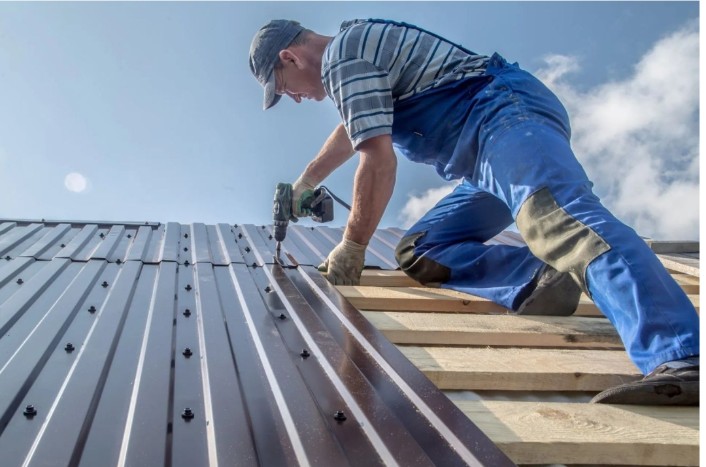In today’s world, maintaining a clean and safe environment is more critical than ever. As businesses, hospitals, and public spaces continue to enhance their sanitation practices, advanced technologies have emerged at the forefront of commercial disinfection efforts. These innovations not only promise effective germ and virus eradication but also offer efficient and environmentally friendly solutions. For more information on these advanced cleaning services, visit www.hireamaid.ca site. Here’s a look at the top five technologies that are setting new standards in the cleaning industry today.
Ultraviolet (UV) Light Disinfection
Ultraviolet light, particularly UV-C light, has become a key player in the disinfection arena. This technology utilizes short-wavelength ultraviolet light to kill or inactivate microorganisms by destroying nucleic acids and disrupting their DNA, leaving them unable to perform vital cellular functions.
How UV Light Works in Disinfection
UV light disinfection is primarily used in healthcare settings, where controlling the spread of pathogens is crucial. UV light systems are employed to sanitize rooms, equipment, and even the air. The technology is advantageous because it is chemical-free and leaves no residue, making it safe for use on a variety of surfaces.
Did you know that UV disinfection technology was used over 100 years ago? In the early 20th century, UV light was utilized to combat the spread of tuberculosis.
Electrostatic Sprayers
Electrostatic spraying technology is a breakthrough in the world of disinfection. These sprayers use a specialized solution that is combined with air and atomized by an electrode inside the sprayer. Subsequently, the spray contains positively charged particles that can aggressively adhere to surfaces and objects.
The Advantages of Electrostatic Sprayers
The key benefit of using electrostatic sprayers is their ability to cover areas that are typically hard to reach. This method ensures a more uniform layer of disinfectant on surfaces, providing a thorough clean. It’s particularly effective in large spaces and is widely used in schools, offices, and medical facilities.
Electrostatic technology isn’t just for cleaning; it’s also used in painting and agriculture to ensure thorough and efficient coverage, demonstrating the versatility of this technology.
Hydrogen Peroxide Vapor
Hydrogen peroxide vapor (HPV) is a powerful sterilant that has been gaining traction in environments that require a high level of bio-decontamination. HPV systems disperse a dry mist of hydrogen peroxide into the air to eliminate contaminants present on any surface within a room.
Why Hydrogen Peroxide Vapor Stands Out
The effectiveness of HPV lies in its ability to destroy a broad spectrum of pathogens, including resistant spores, without compromising the integrity of the disinfected surfaces. This makes it ideal for use in sensitive environments like laboratories and pharmaceutical areas.
Hydrogen peroxide was first recognized as a powerful oxidizer in 1818. Today, its vapor form is noted for leaving no toxic residue, making it a sustainable choice for disinfection.
Robotic Disinfection Machines
Robotic disinfection machines are increasingly being adopted by hospitals and large facilities to perform routine disinfection autonomously. These robots typically use UV light or vaporized hydrogen peroxide to sanitize large areas without human intervention. The Role of Robotics in Disinfection These robots significantly reduce the time required for cleaning and disinfecting spaces while ensuring that human error is minimized. They can be programmed to navigate through various rooms and spaces, providing consistent disinfection each time. In some countries, disinfection robots have been used in airports and public transport systems during the COVID-19 pandemic to ensure thorough cleansing of public spaces. This technology not only enhances safety but also supports staff by handling repetitive tasks, allowing them to focus on more critical responsibilities. Furthermore, the use of robots helps to prevent the spread of infections by maintaining high standards of hygiene with little to no contact required from human operators. As advancements continue, these robotic systems are becoming more sophisticated, incorporating sensors and AI to adapt to new environments and optimize cleaning protocols. Their integration into daily operations underscores a shift towards more automated and efficient health safety measures in public and private sectors.
Advanced Filtration Systems
Advanced air filtration systems, offering the most thorough deep cleaning, play a crucial role in maintaining the cleanliness of indoor air. These systems use HEPA filters, or sometimes even UV light, to trap and neutralize harmful particles and pathogens from the air circulating through a building.
Why Advanced Filtration Matters
HEPA filters can capture particles as small as 0.3 microns in diameter with 99.97% efficiency. When combined with other technologies like UV light, these systems provide an extra layer of protection against airborne diseases.
HEPA filters were originally developed during the Manhattan Project to prevent the spread of radioactive contaminants.
These five technologies showcase the innovation within the commercial disinfection industry, offering new ways to tackle cleanliness and hygiene challenges. As we continue to face health threats globally, the role of advanced disinfection technologies will undoubtedly expand, becoming integral to public health strategies.








